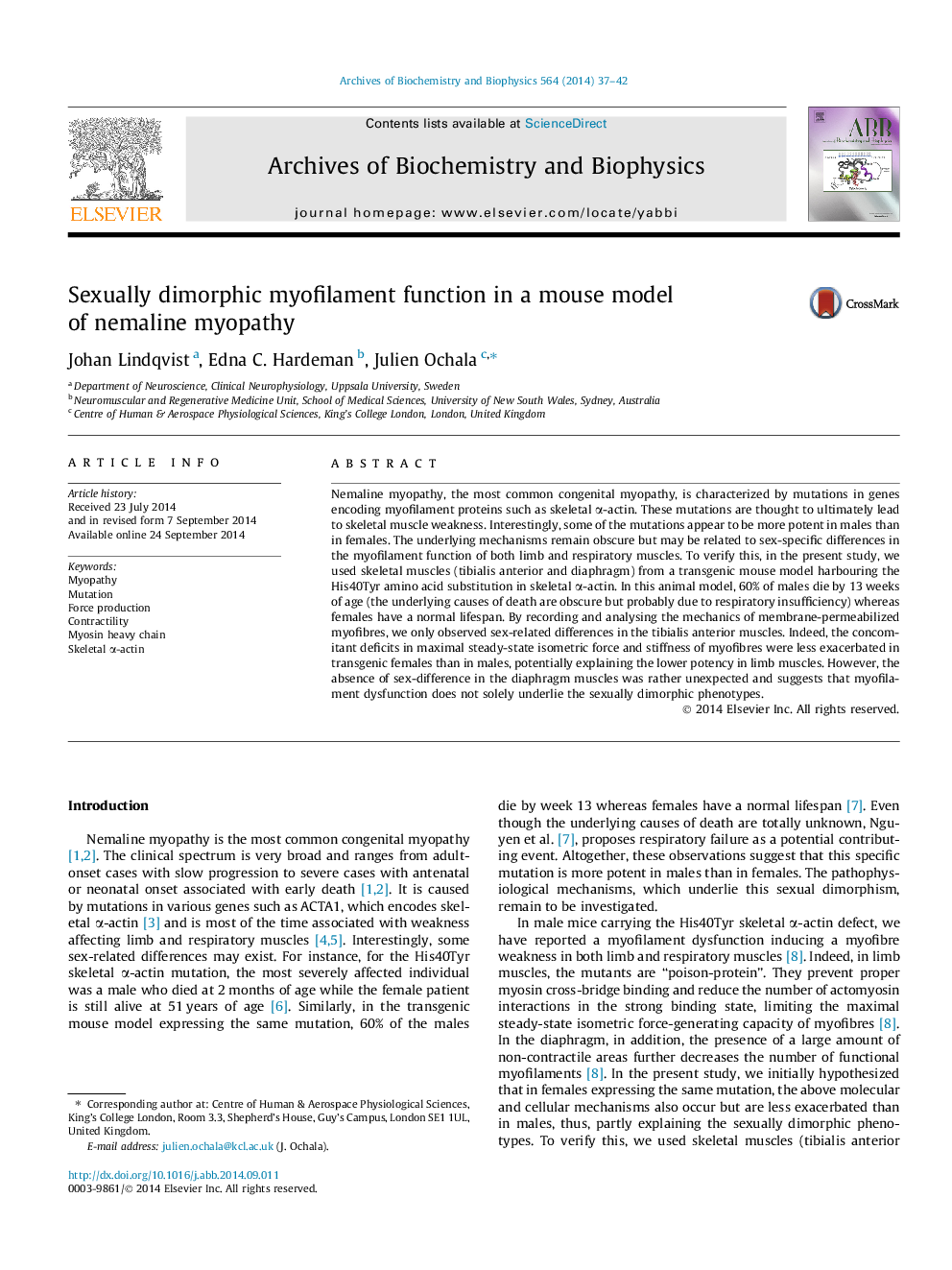| Article ID | Journal | Published Year | Pages | File Type |
|---|---|---|---|---|
| 8290032 | Archives of Biochemistry and Biophysics | 2014 | 6 Pages |
Abstract
Nemaline myopathy, the most common congenital myopathy, is characterized by mutations in genes encoding myofilament proteins such as skeletal α-actin. These mutations are thought to ultimately lead to skeletal muscle weakness. Interestingly, some of the mutations appear to be more potent in males than in females. The underlying mechanisms remain obscure but may be related to sex-specific differences in the myofilament function of both limb and respiratory muscles. To verify this, in the present study, we used skeletal muscles (tibialis anterior and diaphragm) from a transgenic mouse model harbouring the His40Tyr amino acid substitution in skeletal α-actin. In this animal model, 60% of males die by 13 weeks of age (the underlying causes of death are obscure but probably due to respiratory insufficiency) whereas females have a normal lifespan. By recording and analysing the mechanics of membrane-permeabilized myofibres, we only observed sex-related differences in the tibialis anterior muscles. Indeed, the concomitant deficits in maximal steady-state isometric force and stiffness of myofibres were less exacerbated in transgenic females than in males, potentially explaining the lower potency in limb muscles. However, the absence of sex-difference in the diaphragm muscles was rather unexpected and suggests that myofilament dysfunction does not solely underlie the sexually dimorphic phenotypes.
Related Topics
Life Sciences
Biochemistry, Genetics and Molecular Biology
Biochemistry
Authors
Johan Lindqvist, Edna C. Hardeman, Julien Ochala,
